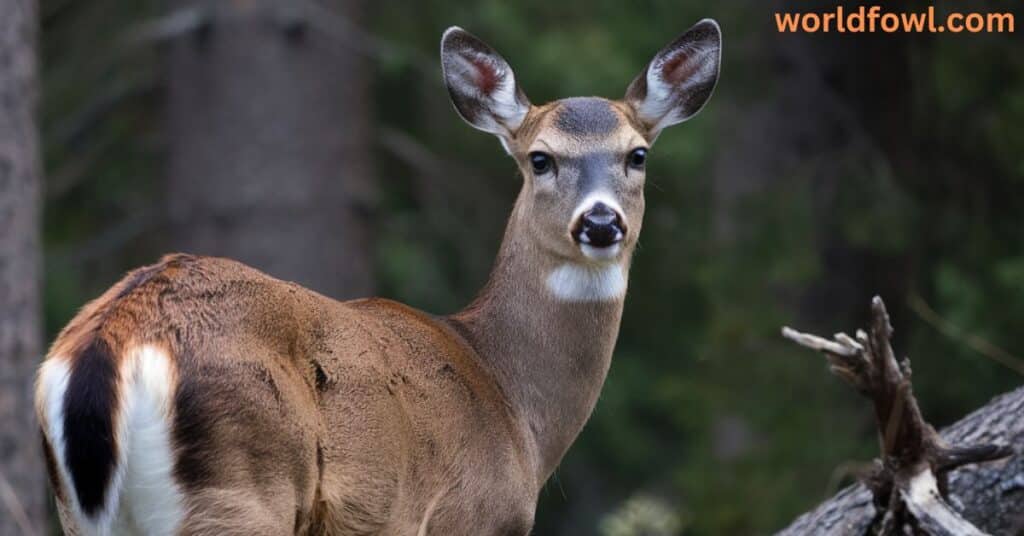Do Deer Attack Humans ? Deer are often seen as gentle creatures, gracefully moving through the woods or grazing in meadows. Many people are familiar with the sight of deer in their natural habitats or even in suburban areas, where they sometimes wander into yards or gardens. However, despite their peaceful appearance, deer are wild animals, and like all wild creatures, they can exhibit aggressive deer behavior under certain circumstances.
Understanding the risks of deer attacks on humans, recognizing the signs of aggression, and knowing how to stay safe can help ensure a positive and safe experience when encountering these magnificent creatures. In this comprehensive article, we’ll dive deep into the reality of deer behavior, the factors that may trigger aggression, and most importantly, how to prevent and protect yourself from deer attacks.
Who Are Deer?
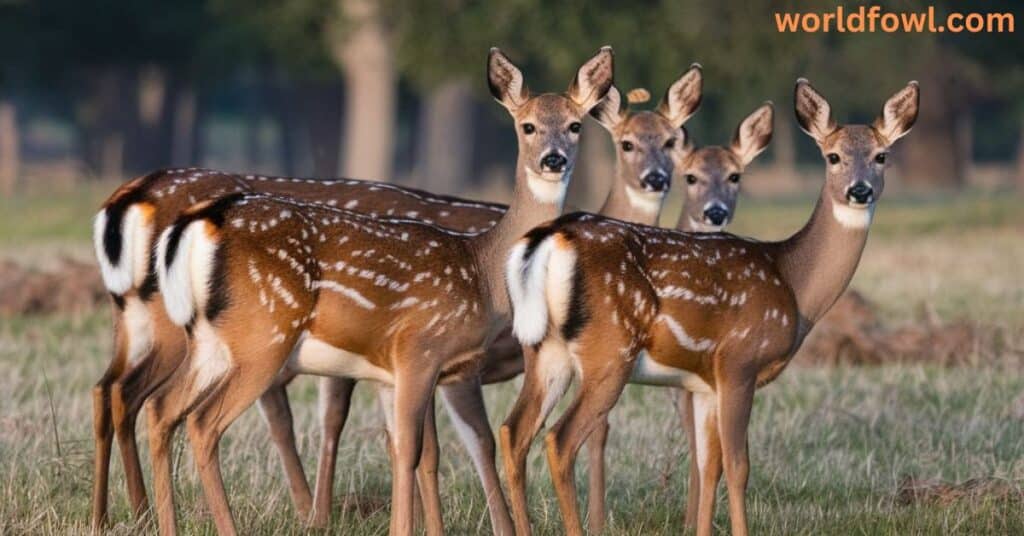
Deer are members of the Cervidae family, which includes over 50 species spread across the world. In North America, some of the most common deer species include the White-tailed deer, Mule deer, and Black-tailed deer. These species are found throughout the United States and are often seen in both rural and suburban environments.
Deer are herbivores and typically feed on leaves, twigs, fruits, and grasses. They are known for their agility and adaptability, able to thrive in a variety of habitats, including forests, woodlands, grasslands, and even urban areas. Their ability to adapt to human presence is one of the reasons why human-wildlife interactions with deer have increased in recent years, which can sometimes lead to human-deer conflicts.
Deer are crepuscular animals, meaning they are most active during dawn and dusk. Their behavior is often cautious, as they rely on their keen senses of sight, hearing, and smell to detect potential predators. While they usually avoid confrontation, deer can exhibit aggression if they feel threatened or cornered.
Physical Features
Deer vary greatly in size depending on the species. The White-tailed deer, which is the most common deer species in North America, typically weighs between 100 and 300 pounds, with males (bucks) being larger than females (does). The Mule deer, found primarily in the western United States, can weigh up to 400 pounds.
Antlers are one of the most distinctive features of male deer. Each year, bucks grow antlers that are shed after the rutting season (mating season), only to grow back the following year. The antlers are used during the rut to establish dominance over other males. These antlers can be incredibly sharp and dangerous if used in a confrontation.
Deer also have hooves that are designed for fast movement, allowing them to escape predators quickly. Their strong legs and natural agility make them excellent jumpers, capable of clearing high fences or obstacles in their way. { Do Deer Attack Humans }
Behavior and Habitat
Deer are known for being highly adaptable animals. While they are most commonly found in forests, woodlands, and grasslands, they have increasingly expanded into suburban areas as human development encroaches on their natural habitats. As cities and towns expand, the boundaries between natural deer habitats and human settlements often blur, leading to more frequent human-wildlife interactions.
Deer are typically solitary creatures, although they may form small family groups, especially during the winter months. In these family groups, the doe (female) and her fawn are the primary members, with the buck (male) joining them only during mating season. Outside of mating season, deer tend to be solitary, with bucks often spending time alone.
However, during the rutting season, which typically occurs in the fall, male deer become much more aggressive. This is a time of intense competition for mates, and bucks engage in deer territorial behavior, often fighting with other males using their antlers to assert dominance. The focus on mating can cause bucks to become unpredictable, and this is when most deer attacks on humans are likely to occur.
Diet and Foraging
Deer are herbivores, primarily feeding on leaves, twigs, acorns, berries, and grasses. Their diet changes with the seasons—during the warmer months, deer prefer tender leaves and young shoots, while in winter, they may feed on more fibrous plant material such as bark and evergreens.
Deer are also known for their foraging behavior. They spend a considerable amount of time searching for food, often moving across large areas in search of the best forage. In suburban environments, deer may raid gardens, lawns, and orchards for food, which can sometimes lead to deer safety risks for humans.
Social Structure
The social structure of deer varies depending on the season. During the fawning season, which typically occurs in spring and early summer, female deer are highly protective of their young. Does give birth to a single fawn (or twins in some cases), and they fiercely protect their offspring from predators or perceived threats.
Male deer, on the other hand, are solitary outside of mating season. During the rut, bucks engage in fierce battles with other males for the right to mate with females. These battles can be intense and sometimes dangerous, and it is during this time that the risk of deer aggression is heightened.
See Also : Do Wood Storks Attack Humans?
When Do Deer Attack Humans?
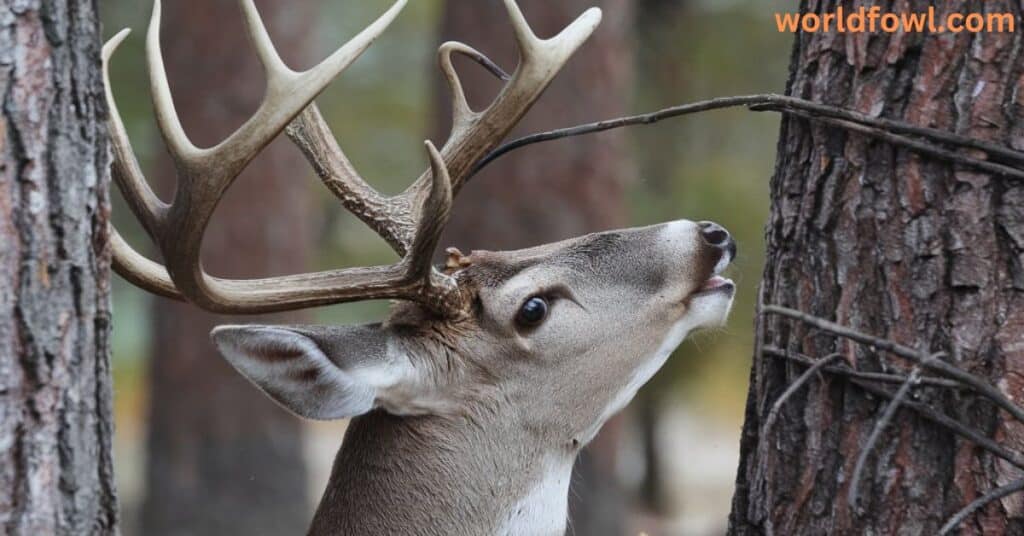
Although deer are generally peaceful, there are certain circumstances when they may pose a danger to humans. Deer attacks on humans are rare, but they can occur, especially during specific times of the year or under certain conditions. Let’s take a closer look at the key triggers for deer aggression.
The Rut (Mating Season)
The rutting season, which typically takes place from late fall to early winter, is the period when male deer (bucks) compete for mates. During this time, male deer are more likely to engage in mating season aggression, driven by hormonal changes. Bucks become territorial and aggressive, using their sharp antlers to fight with other males. This competition can extend to humans, especially if a buck perceives a person as a threat or an obstacle to his pursuit of a mate.
Increased aggression during the rut can result in defensive actions by deer, where bucks may charge or act aggressively toward anyone who gets too close. People who unknowingly wander into a buck’s territory or approach a buck in the midst of a fight may be at risk of being attacked.
Fawning Season (Protecting Young)
Another time when deer attacks are more likely is during the fawning season, which occurs in spring and early summer. During this period, does give birth to their young, and they are fiercely protective of their fawns. If a human comes too close to a fawn, the doe may interpret this as a threat and become aggressive in her attempt to protect her young.
Fawns are often hidden by their mothers in tall grasses or other secluded areas, and if you accidentally stumble upon one, the doe may charge at you to defend her offspring. This is a critical time to be especially cautious and avoid approaching any lone fawns, as the mother could be nearby and ready to protect her young.
When Cornered or Threatened
Deer are typically gentle animals, but they will act defensively if they feel threatened or cornered. When a deer feels trapped or unable to escape, it may resort to defensive actions. Deer have strong legs and sharp hooves, which they can use to kick or charge at perceived threats.
In areas where human development intersects with deer habitats, such as near highways, forests, or hiking trails, people may encounter deer unexpectedly. If a deer is startled or trapped in a confined space, it may react aggressively, leading to an increased risk of injury.
See Also : Do Armadillos Attack Humans? The Startling Reality!
Recognizing Aggressive Deer Behavior
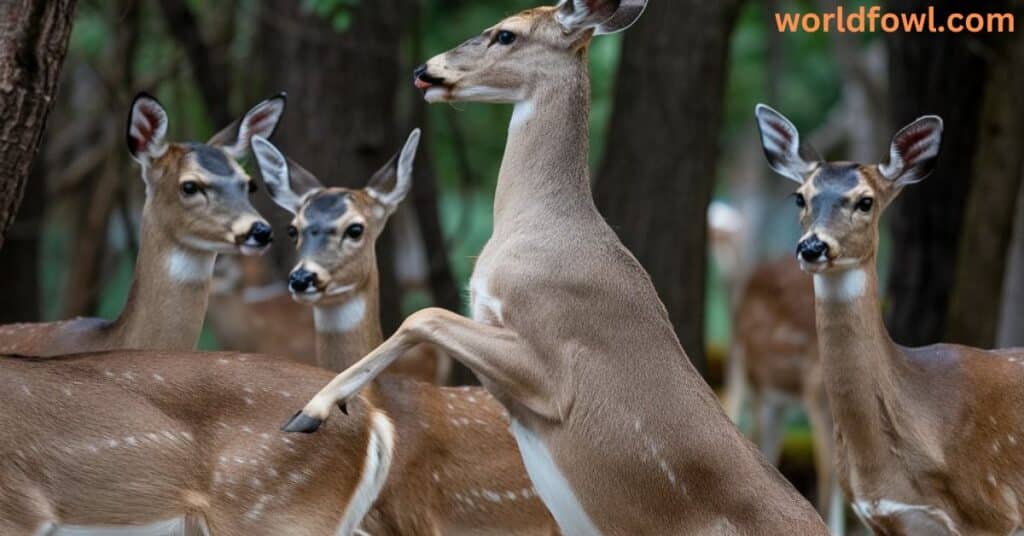
It’s crucial to understand how to recognize the signs of deer aggression so you can avoid a dangerous encounter. Below are the key indicators that a deer may be preparing to attack:
Key Signs of Aggression
- Raised Hackles: If the hair on the back of a deer stands up, it’s a sign that the animal feels threatened. Raised hackles are an indication that the deer may be about to attack.
- Snorting: Deer will often snort loudly when they feel threatened. This is a warning sound, and it can indicate that the deer is preparing to take defensive action.
- Stomping Hooves: One of the most common warning signs of aggression in deer is hoof stomping. This is a sign that the deer is preparing to fight or charge.
- Direct Staring: If a deer stares directly at you without blinking, it may be assessing whether you pose a threat. This behavior can quickly escalate into an attack if the deer feels cornered.
Being aware of these behaviors can help you gauge the situation and take appropriate action to avoid an attack.
See Also : Do Hippos Attack Humans? Deadly Secret!
How to Avoid Deer Attacks
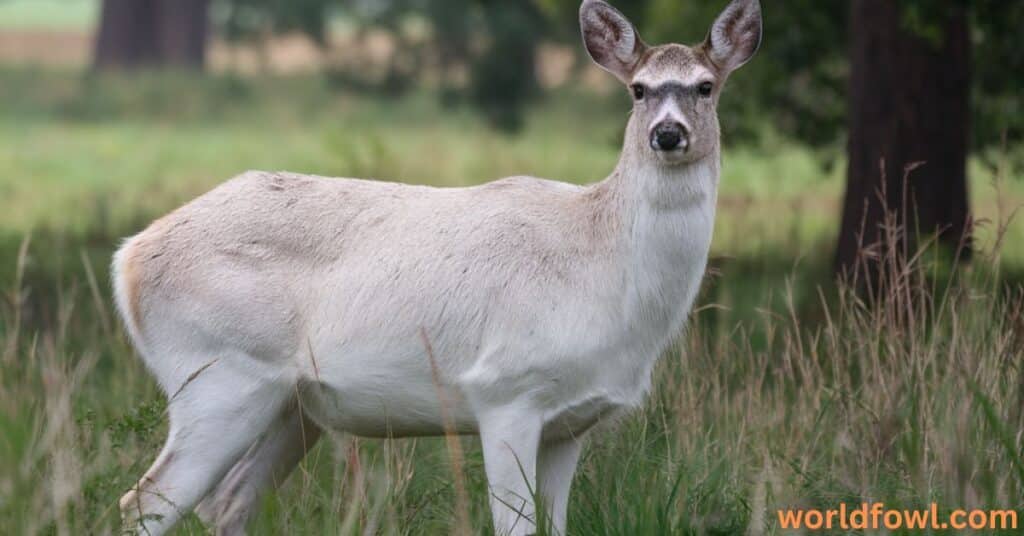
While deer attacks on humans are rare, they can be avoided with the right precautions. By understanding deer behavior and staying aware of your surroundings, you can significantly reduce the risk of an encounter.
Deer Safety Tips
Here are some important deer safety tips to follow when encountering deer:
- Keep Your Distance: Always maintain a safe distance from deer. If you see a deer, do not approach it. Use binoculars to observe them from afar.
- Move Slowly and Calmly: If a deer is in your path, don’t make sudden movements. Move slowly and calmly away from the animal to avoid startling it.
- Avoid Direct Eye Contact: Direct eye contact can be seen as a challenge or threat by the deer. Instead, try to keep your body facing sideways to avoid confrontation.
- Don’t Feed Deer: Feeding deer can encourage them to become comfortable around humans, increasing the likelihood of human-deer conflicts. Always keep food out of reach of deer.
Precautions During High-Risk Seasons
Be extra cautious during periods of mating season aggression (fall) and fawning season protection (spring). During these times, deer are most likely to be aggressive. If you’re in an area where deer are common, avoid hiking in dense woods or fields during peak times. { Do Deer Attack Humans }
Home Safety Measures
If you live in a region where deer are frequently seen, consider taking the following steps to keep deer away from your property:
- Install a Fence: A tall fence (at least 6 feet) around your garden or yard can help prevent deer from entering your space.
- Use Deer Repellents: Certain plants and sprays, such as garlic or hot pepper sprays, can deter deer from approaching your property.
- Remove Attractants: Keep bird feeders, pet food, and other food sources out of reach to reduce the chances of attracting deer to your yard.
See Also : 12 Spiritual Meanings of Cows in a Dream: Divine Symbolism
What to Do If a Deer Attacks
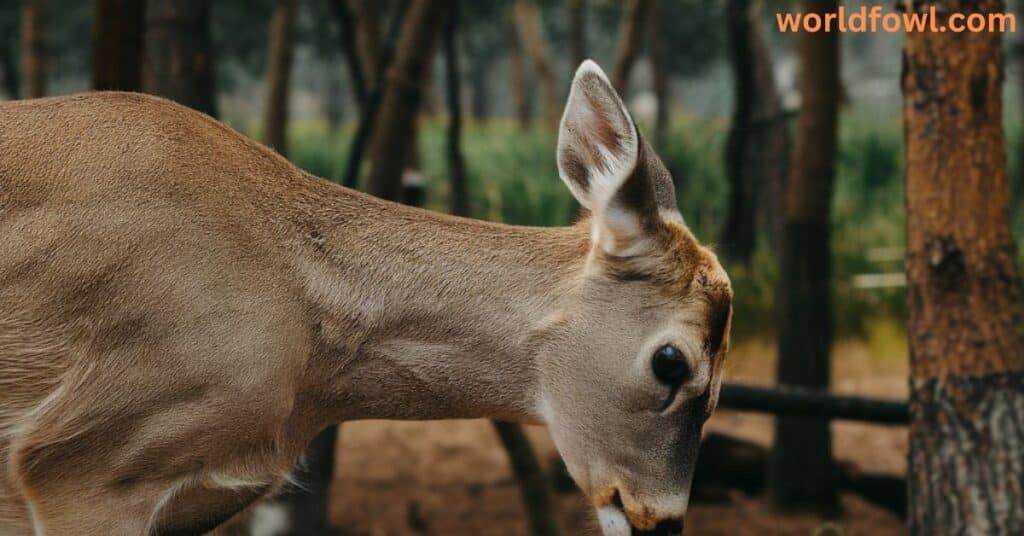
If a deer attacks, it’s essential to stay calm and take immediate action:
Immediate Steps
- Move Slowly: Do not run or make sudden movements, as this may provoke the deer further.
- Protect Yourself: Use any available object (a stick, backpack, or jacket) to create a barrier between you and the deer.
- Back Away: Slowly back away from the deer while keeping your eyes on it. Don’t turn your back on the animal.
Seeking Medical Attention
Even if you don’t think you’ve been severely injured, it’s a good idea to seek medical attention after an attack. Deer have sharp hooves and antlers, and injuries can lead to infection. If you experience symptoms such as redness, swelling, or fever after a deer encounter, consult a doctor immediately.
FAQs: Do Deer Attack Humans
How common are deer attacks on humans?
Deer attacks are relatively rare but do occur. Most incidents involve mating season aggression or defensive behavior during fawning season. In the U.S., deer-related injuries account for several thousand accidents annually, but most of these are vehicular collisions, not direct attacks.
What should I do if I see a fawn alone?
It’s crucial to keep your distance. The mother is likely nearby and will return to care for the fawn. Approaching the fawn can cause the doe to become aggressive.
Can deer attacks be fatal?
Fatal deer attacks are extremely rare but possible, particularly if a person is knocked over or seriously injured by the animal’s hooves or antlers.
Are certain deer species more aggressive than others?
Generally, Mule deer and White-tailed deer are the most aggressive, especially during mating season. Bucks from these species are more likely to engage in fights.
How can I deter deer from my property?
Use physical barriers like fencing, as well as deer repellents or plants that deer dislike, to keep them away from your garden.
What time of year are deer most aggressive?
Aggression peaks during mating season (fall) and fawning season (spring). During these times, deer are more likely to act aggressively to protect their territory and young.
Conclusion: Do Deer Attack Humans?
While deer attacks on humans are rare, they can occur, particularly during mating season aggression or when deer are protecting their young. It’s crucial to understand deer territorial behavior, the signs of aggression, and how to react when encountering these animals. By following deer safety tips and being aware of your surroundings, you can minimize the risk of an attack and ensure a safe and respectful interaction with these wild creatures.
Preventing deer attacks requires both awareness and caution. As we continue to share space with wildlife, fostering a deeper understanding of wildlife behavior analysis and implementing wildlife coexistence strategies will help both humans and deer live harmoniously. By practicing responsible behavior and respecting deer’s space, we can reduce the likelihood of conflict and ensure a safer, more peaceful coexistence with these beautiful animals. { Do Deer Attack Humans }

Henry James is a seasoned blogger and a passionate storyteller on “World Fowl.” With years of experience crafting engaging content, he brings a unique blend of expertise and creativity to his writing. Henry specializes in exploring diverse topics with depth and clarity, captivating readers worldwide.

